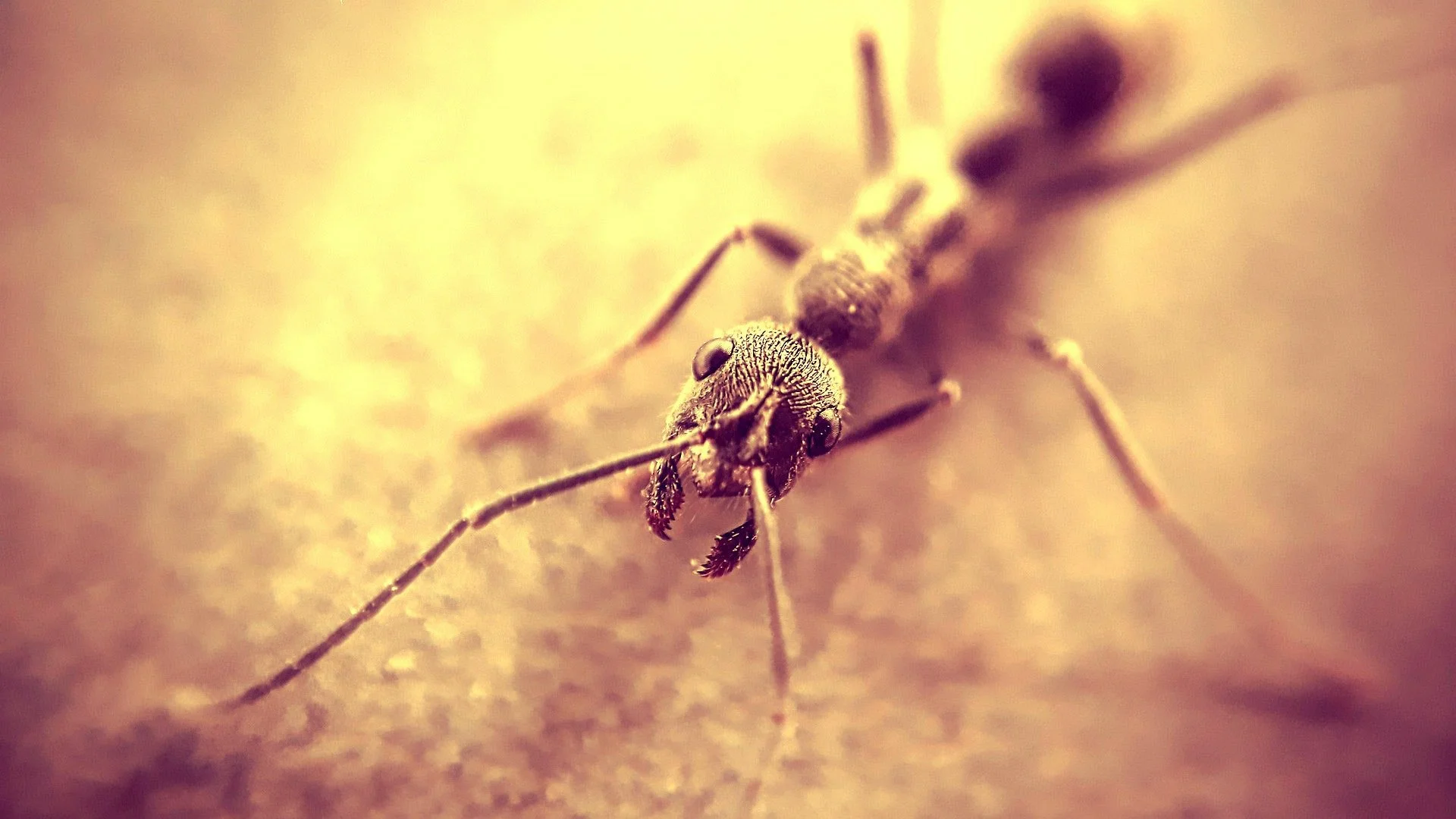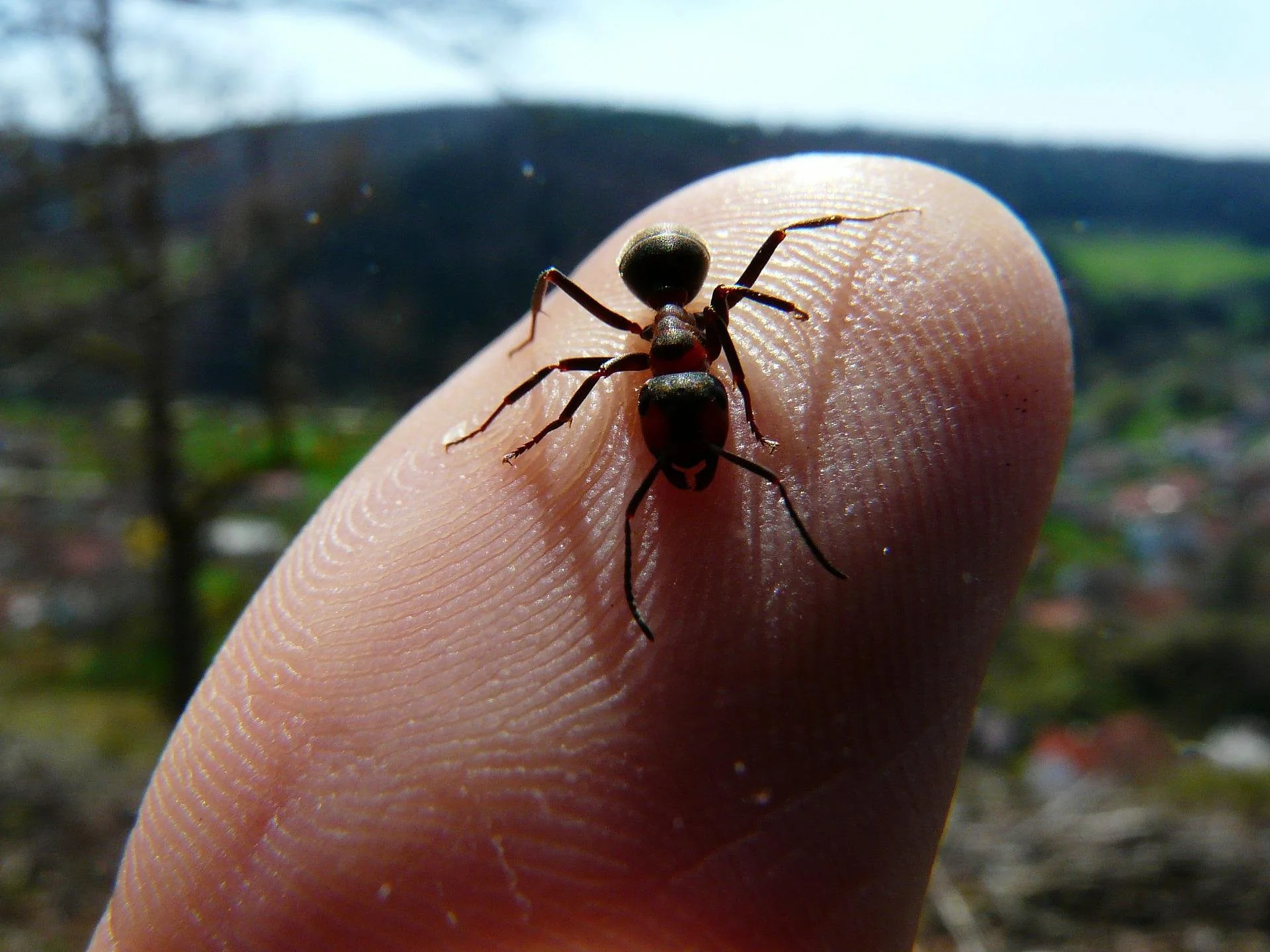The Surprising Scale of Ants
Finding wonder on the ground
Image credit: Unsplash
by Maria Leuzinger
May 19, 2022
When we look for wonder, we often look up. We look to the mountains and the stars, the cosmos, the depths of the oceans. We are pulled to things that remind us of our impermanence on this floating blue rock. Few moments are more magical than nights spent under skies so dark that you swear you can see the stars move and feel the planet spin.
Image credit: Pixabay
Less often, I believe, we gaze down to find wonder beneath our feet. In the dirt and the bugs. True, it is difficult to appreciate things that seem to have vendettas against us. During a summer in Alaska, my cheek entered a wasp’s airspace, and its stings blew up half my face. Mosquito bites thick as chicken pox covered our legs in Colorado. In Wyoming, mosquito clouds buzzed like electric fans and forced us into rain gear on sunny afternoons because nylon was the only thing their blood-sucking proboscises could not penetrate. I did not care to search for wonder and intricacies in these insects. I searched only for my DEET.
The ants were a different sort. On backpacking trips, the ants kept a respectable distance from our tents. They led private lives, tending to their queens and tunneling beneath the Earth. Their matriarchal colonies held no innate grudges against us. They made no noise and stirred no fuss. Their refusal to make themselves known stripped them of well-deserved admiration. I did not know that ants were as wondrous as the grander parts of nature until I watched one die on the steps of a cabin in the Colorado Rockies.
It was a dry mountain day, the kind that burns lips and bleaches hair. A day when the world, despite much evidence to the contrary, seems at peace. How could anything be wrong in a world with mountains this grand and air this fresh?
The ants foraged but meant no harm. I didn’t notice them at first. I was in a summer’s trance. When I saw the ants, I let them climb over my boots and sniff my journal. They were inquisitive things, and I was a visitor in their home. They floated over pine needles like an ocean tide. Fluid. Undeterred.
One had not been so lucky. My shoe had landed on her and knocked her head off. The least I could do was make her acquaintance. She was a beautiful thing, a common black ant, just one of over 12,000 ant species and subspecies on Earth. Like all other worker ants, she was a “she.” Her body shone like a wet river rock. Her neck (though now detached), as dignified as the swan’s. Her waistline, enviable. Her abdomen, oddly hairy. Her decapitated head held two furry antennae that would catch the wind and tug the head this way or that. Her limbs twitched of their own accord, postmortem protests of severed nerves.
In middle age, among the domestiques that tidy up
the combs, a few learn to carry out the dead.
Not a universal instinct, although almost all will stop
to lick the corpses, while others walk around or over,
tug or nudge the carcasses short distances and then give up
…
From “Necrophoresis” by Michael Collier with permission.
Among these small ants scurried larger and more robust counterparts. Something told me they held a niche role in the colony. Evolution would not have graced them with a stronger physique without an extra burden of responsibility. One of the larger ants broke from her path and came toward me. Upon meeting her dead comrade, she stopped and circled many times. She nudged like a puppy unsure if its owner was sleeping or dead. Wake up. She lifted the body and dragged it off as the severed head blew away.
Later, another large ant approached. She traced where the body had been as though she sensed that something was gone, as though she had unfinished business. How could she have known? I figured the dead must leave a scent in their wake, a final help me.
I later learned that what I had witnessed that day is called necrophoresis. It’s a sanitary practice used by ants, bees, and termites to keep the sick and dead far from the colony and larvae. Those larger ants, known as undertakers, track pheromones released by their sisters after death. They then gather the bodies and drag them to the “midden,” a sort of ant graveyard or garbage dump. So, I was correct that the ants I observed had smelled something! I felt like a bona fide naturalist.
Those black ants belonged to a colony that likely had a few thousand other members. But some colonies are much, much bigger. A European supercolony of invasive Argentine ants may be the world’s largest, running for 3,730 miles from the northwestern tip of Spain down the Portuguese coast to the western coast of Italy. This colony, composed of billions of workers, is longer than the range of the Rockies in which I was sitting.
The longer I watched the ants, the more of them I saw. They poured from the pronged pine cone scales, then vanished as quickly as they came. The forest floor danced with their games of hide-and-seek.
Image credit: Unsplash
Ants are torturous things to count. Their numbers are so mind-numbing that you’d have more ease counting the million tufts per square inch of fur on a sea otter. Estimates range from the hundred trillions to the high quadrillions, though some experts say there is not currently a realistic estimate. At either end of this range, there are more ants than stars in the Milky Way (100 billion-400 billion). Ants on Earth potentially outnumber galaxies in the observable universe. Estimates of galaxies range as high as 2 trillion, though counting them is an equally fickle endeavor. Scientists continue to discover new galaxies and new ant species. In short, there are a lot of ants.
Despite these dizzying -illion numbers, ants are not usually known for population size or necrophoresis, but for their strength-to-weight ratio. Most ants weigh only between 1 and 10 milligrams, but some have been documented carrying up to 20 times their body weight. This is comparable to someone my size (a petite 5 feet, 2 inches on a good day) dragging an adult bison backward, up a tree, by my teeth.
Though they weigh only a few milligrams as individuals, ants are horribly heavy when combined. Ant biologist E.O. Wilson famously estimated that all the ants in the world combined would outweigh all the humans in the world combined, though reporting from the BBC called his numbers into question. More recent reports still place the biomass of all terrestrial arthropods four ranks above humans.
Thankfully, my encounter with the ants whose goings-on I’d witnessed in Colorado did not end in stings or hives. Dare I say I’d grown fond of the things. I felt admiration — no, possession? — for them. This was my moment of awe. These scrappy little bugs who once roamed with dinosaurs were now here, with me, and I’d bet they’ll be here when we are gone.
Maria Leuzinger
Maria Leuzinger received her bachelor's degree in German studies from the University of Puget Sound in Tacoma, Washington. She currently works as an English-teaching assistant in Hamburg, Germany. Maria is in her last semester of the Johns Hopkins University Science Writing Program. Her work has appeared in public-facing communications on the website of the Abdus Salam International Centre for Theoretical Physics in Trieste, Italy, and in the Tacoma, Washington-based South Sound Magazine.




